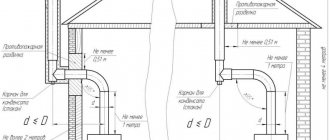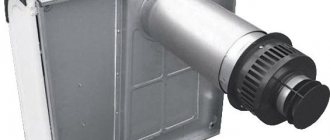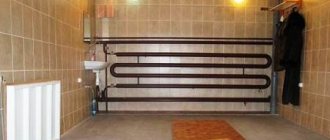Car owners are especially sensitive to the place of his life. Of course, for those who have transport only as a means of transportation, it does not matter much in what conditions it is located during periods of downtime. For repair purposes, service stations are available, tires will be inflated at a gas station, and a four-wheeled, or less commonly, two-wheeled friend can be stored on the street or in a paid parking lot. Whether it’s the case with real lovers of transport and driving. They know everything about their car. And problems, and methods for solving them, what the engine likes in terms of oils and fuel, and how the car behaves when starting in different weather.
There comes a time when caring car owners have a garage. A private room that is closed and protected from bad weather, where the car, and possibly its owner, will spend most of their time.
In essence, a garage is, in addition to a place to store vehicles, also a small auto and/or regular workshop, a meeting point for friends or a space where you can be alone. Unfortunately, it is not possible to use such a room for a comfortable presence all year round. In winter, late autumn or early spring, it is cold. And even starting the car poses certain problems during this period. The oil in the engine and gearbox becomes thicker, and the fluid in the power steering and brakes hardens. This is why starting in the cold is more difficult and makes it more difficult for the car to start moving. In addition, it is much more difficult to carry out scheduled repairs or maintenance of equipment during periods of bad weather or frost - the temperature is too uncomfortable for the human body.
To remove these problems from life, heating is installed in the garage, which will heat the air and surfaces in it. There is another little-remembered benefit from constant heat - less condensation forms, which means less damage not only to walls, but also to parts of the car or tools from excess moisture.
Assembling garage heating is relatively easy, you just need to first take into account all the basic and additional factors for equipment of this type. A thrifty owner will definitely ask three main questions before the process of installing a heating system: what and how to heat it, methods of maintaining temperature and reducing its losses when doors or gates are opened.
The list of solutions to the first question is quite long and includes equipment ranging from a wood stove to homemade electric liquid heating. In addition, the answers to the remaining ones are also very ambiguous.
Heating a garage: the most economical way, what to choose
If the outbuilding is located next to the main building, gas heating is often used. In this case, the heating system can be connected to an existing one in the house.
To heat your garage yourself economically, you can use the heating option using different types of solid fuel raw materials. Which can be used as firewood, peat, coal and diesel products. At the same time, you can save on resources, but it is important to think about the storage of raw materials.
A simple potbelly stove can adequately heat a small room
For your information! A simple solution is a gas convector. In such equipment, heat circulation occurs due to convection. The device is connected to a cylinder, but it will need to be refilled every few days.
Solid fuel boiler
How else can you heat your garage in winter? There is no need to give up traditional solid fuel. Firewood, coal, pellets, and even manure, if you have enough of it - all this can go into the firebox. You can build a simple oven in the garage with your own hands. By the way, it is the potbelly stoves that have not yet given up their position in the fight against the cold in garage towns. Newfangled electrical systems are still far from popular.
A simple stove can be lined with bricks or stones, this will increase the heat transfer area
Long-burning wood-fired boilers for the home. Principle of operation, scope of application, main manufacturers, selection criteria, how to make it yourself, installation features, recommendations of specialists - read in the publication.
Such a heating device requires constant supervision, but for temporary heating it is suitable like no other. You'll stay warm even if your garage's electricity is cut off for non-payment.
Modern manufacturers offer a wide range of small solid fuel boilers that can be used for car bunkers. They are economical, easy to use and compact.
What heating methods are there for a garage?
The most economical way to heat a garage is determined by many factors: availability of fuel raw materials, financial capabilities and distance from the main home.
Heating of the engine shelter can be carried out by the following devices:
- mobile equipment: heat guns and fans for heating;
Related article:
Diesel fuel heat gun. The advantage of such equipment is mobility. After all, you can simply move them wherever you need. Read the article on how to choose this device correctly and what you should pay attention to.
- infrared heaters;
Such a device does not release harmful combustion products into the air
- electric boiler is suitable for spacious rooms; stationary heaters.
High-quality heating equipment is important to create a favorable environment in the garage.
Advantages of electric heating in a garage
It is recommended to consider heating your garage with electricity as the most economical option. It has the following advantages:
- ease of installation and availability of electricity;
- a wide selection of devices of various types;
- you can choose a device with suitable power;
- rapid heat transfer.
Convectors are used as heating devices
The disadvantages of such equipment include its high cost. Keep in mind that the quality of heating depends on the uninterrupted operation of the electrical network.
You can use these methods:
- heat guns are an inexpensive option; after heating, air masses in them are distributed under the influence of a fan;
- infrared equipment heats surfaces and all kinds of objects, and they provide heat. Infrared rays will not harm the car's paint;
- the convector warms itself up and distributes the heat around. It heats the space worse than a cannon, but the heat lasts for a long time;
- The most expensive options include inverter split systems. They allow you to save electricity.
Electric heat gun models heat compact rooms quickly enough
Helpful information! Thermal models are recommended for small spaces. Fan heaters and heat guns not only warm up, but also help dry the wheels and bottom of the car.
Water heating
If the garage is built close to the main building, then the most economical option is to heat the garage in connection with the main heating system.
In this case, you do not need to install a boiler, but you will need to extend the pipeline. This option will lead to loads and an increase in the amount of fuel. If a separate boiler is used, then full power can be used if necessary, and in other cases the equipment operates at rated level.
Water heating can be done not only from a boiler, but also from a stove
Note! To avoid defrosting, you should use antifreeze instead of water in the system.
Gas heating
The most effective option is gas. This is a good solution in cases where there is a gas main nearby. To install such a heat source, it is necessary to draw up design documentation and obtain a special permit. Using gas requires compliance with all safety measures. It is prohibited to use a homemade device or connect any equipment.
Gas heating installation option
Using gas, you can create a complete heating system with a boiler and pipes. It is also used for various types of heaters.
When using liquefied gas, the container for its storage must be stored behind metal walls
Helpful information! Alternatively, you can use liquefied gas for convectors, infrared heaters or guns. When using gas burners and heat guns, do not forget to ventilate.
Solid fuel - a budget option
If you have solid fuel, you can even make a homemade heating structure in the garage. In terms of saving characteristics, coal and firewood are superior to other options. Various industrial waste, combustible waste, and plant residues are used as fuel. This option does not depend on energy lines.
There is a huge variety of stoves powered by this type of fuel.
As a heating device, you can make a stove with your own hands from sheet material, a barrel or from fittings. This heating method is more fire hazardous than others. It is necessary to constantly maintain combustion. Some devices are not environmentally friendly.
This is what the oven looks like in cross section
Wood-burning stoves are available in different options. These are potbelly stoves, long-burning devices, brick structures and pyrolysis devices. A potbelly stove is perfect for small spaces, and it also dries the air. Boilers are a safer option. They can work without the constant presence of a person.
Equipment operating during mining
Operating principle of mining equipment
Remember that such structures require good care. They need to be cleaned of soot at least once a week.
Note! To install the stove, a chimney is required, the height of which should be about 4 meters. Its installation is carried out at a certain slope.
Related article:
How to organize air heating
This heating method involves direct heating of the air in the garage from a selected heat source. This can be any of the following units:
- solid fuel stove;
- furnace - dripper in production;
- electric heater - convector, oil radiator or heat gun;
- gas convector.
Note. We deliberately do not include in the list heating units that emit combustion products directly into the room - diesel stoves of the Savo type, direct heat guns and gas infrared heaters. Look through any automotive forum and see that users in the reviews complain about headaches and poor health from inhaling exhaust gases.
Such heaters emit diesel combustion products directly into the room
Installation of a wood-burning and exhaust stove
Direct heating of the air in the garage by burning cheap fuel - firewood and various waste - is the most economical heating method. But you need to organize it wisely, otherwise the heater will heat one corner of the room, while the opposite one will remain cold. It is clear that you cannot install a stove in the middle of the room, which means that the issue of heat distribution must be solved differently.
To make effective air heating of a garage or box with your own hands using a wood stove, use our recommendations:
- Order, buy or make an economical potbelly stove yourself, not just an iron box with a pipe. You will find examples of furnaces with drawings, diagrams and assembly instructions in the corresponding publication.
- The heat exchange surface area of the heater walls must correspond to the dimensions of the room. The calculation is as follows: in order to add logs at intervals of 3-4 hours and evenly warm up a 20 m² garage, the heating surface area should be 1 m².
Convection fins are welded to the furnace body, increasing the surface area and improving heat transfer - The part of the housing around the ash pan is not taken into account (it heats up slightly). But the area of convective fins welded to the walls from the outside is taken into account.
- Install the potbelly stove in the chosen location and be sure to organize airflow around the case with any fan - household, for hoods or a computer cooler. Thanks to the forced air movement, heat is more efficiently removed from the walls of the firebox and distributed more evenly throughout the box.
Options for blowing a wood stove with a fan - Before venting to the street, lay the chimney horizontally along the wall, so it will release more heat into the room.
- Raise the chimney pipe to a height of 5 m, counting from the grate, and equip it with a damper to adjust the draft. Provide a condensate collector at the bottom; adjust the cap at your discretion.
A horizontally laid chimney allows you to increase the heat exchange surface area and improve room heating
Note. The calculation of the heat exchange surface area of the stove is taken from the practical experience of our expert Vitaly Dashko. The calculation is correct for garages with a height of no more than 3 m.
There are designs of homemade stoves designed for air heating of workshops, garages and other outbuildings. Below is a diagram of a potbelly stove made from a gas cylinder and equipped with a separate heating chamber through which air is blown by a fan. If necessary, water can also be driven through the heat exchanger.
Advice. If you have recently replaced a floor-standing gas boiler in your home, do not rush to throw it away. Take the old unit to the garage, connect it to the chimney and heat it with wood, pumping air into the empty water jacket using a cooler (from the bottom pipe). Then you won’t have to cook the oven.
All of the above applies equally to potbelly stoves using waste oil. The only difference is the placement of the fuel tank that feeds the dropper. Keep the tank away from the stove to prevent fire. Do not use a regular two-chamber miracle heater - it is a fire hazard and consumes up to 2 liters of waste per hour. Use models with a drip burner.
Placement of electric heaters
The first thing you need to do is to choose the right electrical heating appliances based on power. If you want to heat the entire garage, then measure its area and multiply the resulting quadrature by 0.1-0.15 kW. That is, a box of 20 m² will require 20 x 0.15 = 3 kW of thermal power (and it is equal to electrical power), sufficient to maintain positive air temperatures.
Now let's move on to the recommendations:
- If your work in the garage is periodic and short-term, it is better to save money and buy a portable fan heater or infrared panel. It is located in the right place and heats only part of the room. The thermal (also known as electrical) power of the device is 50% of the calculated one.
- Try to use heaters equipped with a turbine or fan to distribute heat better and faster.
A suspended infrared device heats surfaces within its range of action. - A rational solution for convectors and other wall-mounted appliances is to install several small heaters at different points instead of one large one. Then the garage will warm up evenly, and if necessary, half of the heaters are turned off.
- Do not follow the lead of sellers who are trying to sell a more expensive device under the guise of an innovative and high-tech product. The efficiency of all electric heaters is the same and equal to 98-99%, the difference is in the method of heat transfer.
Different heating methods can be combined. For example, it makes sense to hang an infrared panel above a workbench to provide local heating. Heat the rest of the garage with a stove or a heat gun - whichever is more profitable. Don't forget about garage ventilation - it is necessary when burning any type of fuel.
Heating in the garage using electricity
Any technical structure needs heating in cold weather. This is especially true for rooms where valuable materials or equipment are stored. A garage can easily be considered such a place. After all, this is often not only a place to park a car, but also a part-time workshop. Therefore, at the design and construction stage, it is necessary to decide how to heat the room more profitably and practically. Unfortunately, this is not always provided for, especially in urban garage cooperatives.
In such cases, you have to decide which heating system to choose in the garage and how to install it. And the further you go, the more difficulties arise, so we will try to answer the most common questions about heating systems in the garage:
- Features of heating technical premises.
- How to choose the type of heating in the garage?
- Electric heating and its types
How to choose a garage heating electric boiler
In addition to the operating principle used, when choosing an electric boiler for heating a garage box, take into account the power of the device, as well as the manufacturer’s brand.
It would not be superfluous to pay attention to the cost of the unit. New heating element boilers from well-known manufacturers will cost from 30 to 50 thousand
rub. Induction models will cost approximately the same amount. Electrode units - economy class boilers, are sold in the range of 10-15 thousand rubles.
Another selection criterion is the design of the electric boiler and the features of its operation. The most economical are electrode boilers, but their operation requires the use of a certain type of coolant and does not allow the use of antifreeze. Boilers cannot operate at low temperature heating. Therefore, electrode electric boilers are installed only for constantly heated rooms.
Induction heating equipment works with any type of coolant, therefore, it is installed in heating systems filled with non-freezing liquid. New heating elements maintain minimal heating of the coolant to prevent freezing of the heating system.
How to calculate power consumption
The optimal boiler power is calculated based on the area of the room. When calculating, take into account the necessary reserve of productivity in case of severe frosts.
Calculation of heating a garage with an electric boiler is performed according to the formula 1 kW = 10 m². For a private garage of 20 m², you will need a 2 kW boiler. The required power reserve is 15-20%. The optimal solution would be to install a 3 kW electric boiler.
The best brands of garage electric boilers
Electric energy-saving heating boilers for garages are produced by domestic and foreign manufacturers. To narrow the search, equipment is classified into several categories, depending on the operating principle used. For heating a garage, the optimal price-quality ratio is a Russian-made electric heating boiler. A new domestically assembled heating element unit can be purchased for 10-15 thousand rubles. Replacing the heating element, which will be required after 5-6 years of operation, will cost only 1500-2000 rubles.
Requirements for installing an electric boiler in a garage
Autonomous heating in the garage is carried out in accordance with the rules described in the PUE. When connecting, they are guided by the technical features of the selected electric boiler.
Installation of an electric heating boiler, up to 8 kW of power, in a garage is regarded as the installation of an ordinary household water heating device. The connection is made through an RCD (except for an electrode heater) and automation. A grounding circuit is required. Electric boilers with a power of more than 8 kW require a three-phase voltage supply to the garage. Only a specialist with the necessary work permit can connect the boiler to a 380V network.
A garage heating system with an electric boiler is effective for several reasons: low cost of installing heating equipment and completing the necessary documents, autonomous operation and high heating safety. Ease of use and quiet heating of the coolant are also noted as advantages.
Heating in the garage: features and pitfalls
City residents most often use the garage not only as a place to park their car, but also as a storage room for conservation items, furniture (for example, during renovations) and other things. And, of course, for every man, the garage is a workshop. Such multi-tasking spaces require comfortable conditions. Therefore, it is important to provide for the possibility of warming up the room more strongly if there is a need to spend significant time there.
Advantages and disadvantages of a heated garage
At first glance, it may seem that there are many benefits to a heated garage. In practice, everything is not so simple: above-zero air temperature in the room is not an advantage, but a necessity. Let's look at a few of the main reasons why heating your garage is so important.
- Preventing condensation
After all, the main purpose of a garage is to park a vehicle. All motorists know that the car should be stored not just warm, but under certain conditions. The most acceptable temperature for a garage is +5°C. In such conditions, the difference between the temperature of the external environment and the room is minimized, which, subject to good ventilation, helps prevent the formation of condensation. Dampness harms both the room and the car, and if stored for a long time in improper conditions, the car body can begin to rust.
- Serviceability of vehicle systems
At low temperatures, the oil in a car becomes viscous, making it difficult to start a cold engine. This creates certain problems for the driver and negatively affects the vehicle. In addition, with prolonged exposure to cold, the elasticity of rubber elements decreases, as a result of which they become unusable.
Without a doubt, a heated garage is comfortable. In addition to the fact that it is pleasant to get into the car (after all, it maintains an optimal temperature), the locks stop jamming and the engine starts the first time. Another important advantage is the ability to spend time comfortably in the garage. This is very important when you decide to repair your vehicle yourself or do something else.
In addition to many advantages, a heated garage has its disadvantages. We will briefly list the difficulties that may arise in connection with heating a technical room.
- Quite a lot of resources are spent on heating, which, in turn, cost a lot of money. Therefore, you should be prepared that during the heating season, your heating bill will be higher than usual.
- In order to install a heating system you will need 1000 and 1 more item. Especially if you don't have a basic set of tools. The heating system, materials and other consumables are also not cheap.
- With the advent of heating in your garage, the room can be classified as dangerous. Of course, this largely depends on the type of heating you use, but the risks definitely increase.
Despite the disadvantages, every car enthusiast knows that the advantages of a warm garage are still greater and more significant. Therefore, it’s time to talk about what kind of heating can be installed in the garage.
Advantages and disadvantages
When choosing a heating type, pay attention to the pros and cons of the chosen technology. Warm floors are attractive due to:
- uniform heating of the floor surface. Repair work is often carried out in the garage, and it may be necessary to inspect the bottom of the car. It is comfortable and not dangerous to your health to lie on a heated floor;
- energy savings if you use gas and solid fuel boilers for heating;
- Simple insulation of the walls and roof is sufficient so that in winter the temperature does not drop below 15 ° C, which is the lowest possible temperature, according to sanitary standards, for car parking areas. A microclimate is created that prevents the formation of rust on the body and other damage. The layer of air closest to the car warms up;
- variety of floor heating systems.
Although heated floors maintain room temperature well, they have technical disadvantages:
- load distribution - the floor in the garage is constantly under increased pressure due to the weight of the car. It is necessary to carefully calculate the load and mount it correctly so that the pressure from the wheels does not disrupt its operation;
- repair problem. The entire heating system is located under the floor, and in the event of a breakdown it will have to be completely dismantled.
Types of heating in a garage
Heating a garage can be done in many ways. Let's talk a little about each of them.
1. Solid fuel heating
This type of heating is quite popular in heating technical premises. It is good because the cost of heat resources is low, which means there is an opportunity to save money. In addition, modern stoves have an efficiency of 70% and have a very pleasant aesthetic appearance. A significant drawback is the need to maintain the temperature manually; there is no talk of autonomy here, which is not always convenient. Heating with solid fuel is one of the most dangerous types of heating.
2. Gas heating
Heating a garage with a gas boiler is only appropriate when it is located on an area with already installed gas communications. Then connection and installation will not be a big problem. But nevertheless, the cost of the equipment is quite high, so this type of heating is not used often.
3. Electric heating
Electric heating of the garage is possible from a convector, infrared emitters and film. Despite the fact that heating from electricity is quite expensive, in terms of comfort it is ahead of other types of heating systems. This is due to the high level of automation and minimal need for control.
Is it possible to call heating using diesel fuel and waste fuel economical?
If you receive them completely free, then you can heat a room of any size, including a garage, simply and without investing large amounts of money. This economical heating will best achieve the required temperature in the shortest possible time and will be able to heat the room for a long time.
It is extremely rare to use diesel fuel to heat a garage, since it is not entirely practical
It is not uncommon for people to have access to materials such as:
In order to use such fuel, you can use self-created units, but only if they have an inlet for removing combustion products outside. The structure must be connected in accordance with fire safety requirements to reduce the likelihood of fire to a minimum.
A garage heated in this way will be very comfortable and pleasant to stay in, and the original boilers should be positioned so that metal or asbestos sheets are placed around them.
It is advisable, to maintain safety, to use exactly those boilers that are already ready for operation and only require a connection, since they meet all the necessary standards and eliminate the possibility that the heater will cause a fire or more serious consequences.
The heating design must have a special container for oil, which can be made from a gas cylinder or other products of a similar type. The length of the exhaust of combustion products into the chimney must be at least 1 m and have a diameter of 15 cm. It is best to install straight chimneys to increase the level of heat transfer. Oil is poured into the tank 3/4 full, and ignition is carried out using a blower. As a rule, the oil does not burn completely and no smoke is produced. The oil must be free of impurities and water. This heating can be water and such heaters operate on antifreeze.
Electric garage heating: types and features
As already mentioned, heating a garage with electricity is one of the most convenient, albeit uneconomical, methods of heating. In this regard, the popularity of this method is growing: the number of electric heating systems on the market is noticeably increasing. Let's look at the most popular types of electric heating in the garage.
Heat guns
A heat gun is essentially a big hair dryer. Such heating is the most economical method among electrical appliances.
The advantages of heat guns include:
- mobility;
- compactness;
- ease of use;
- low cost;
- rapid heating of the room;
- possibility of adjusting the heating intensity;
- automation (the device can turn off after a set time).
Disadvantages of heating with heat guns:
- the device dries out the air;
- heating is uneven;
- makes noise during operation.
From all of the above, we can conclude that a heat gun is a very effective and inexpensive option.
A convector is a reliable and efficient heating option. The principle of its operation is similar to a heat gun, but the air does not move under pressure, but according to physical laws: cold air comes in from below, heats up and comes out warm. This system is called convection; it provides more uniform heating.
Advantages of convector heating:
- convenient operation;
- simple installation;
- high level of automation (the device has 5 or more modes and automatically turns off when the temperature reaches the desired value, if the air cools down again, the convector turns on and continues heating);
- safety;
- silent operation;
- aesthetically pleasing appearance.
Disadvantages of convector heating:
- high cost of the device itself;
- During regular operation, it consumes a huge amount of electricity.
A convector is the most convenient and practical way to heat a garage with electricity. Such a system allows you to quickly, safely and automatically warm up a room and maintain the desired temperature in it.
Infrared heaters
The operating principle of infrared heaters differs significantly from those types of electric heating that we have already considered. It consists of the following: the rays produced by the device heat the objects at which it is directed. Due to the transfer of heat from objects, the room is heated.
Infrared heaters have the following advantages:
- convenient use;
- easy installation;
- durability;
- many modifications (there are plenty to choose from to suit your needs).
Disadvantages of IR heaters:
- uneven heating;
- heating of surfaces;
- increased fire danger.
Infrared heaters are indispensable when you work primarily in one area of the room. They do not consume too much energy, so they can be safely called economical.
Gas
In terms of the cost of energy (natural gas), this is the most economical way to heat a garage, but it is accompanied by hidden costs:
- preparation of design and permitting documentation;
- payment for the work of licensed gas equipment installation specialists;
- costs for ventilation and removal of combustion products;
- costs for routine maintenance of the boiler;
- possibly the necessary construction and subsequent maintenance of the chimney.
Alternatively, to heat the garage you can use infrared gas heaters, heating panels, convectors that consume liquefied propane and butane in cylinders - this eliminates the need to go through the authorities, but adds the problem of providing fuel.
Features of gas heating:
- advantages - high level of automation of the heating system, when using natural gas - constant availability of energy in the main line, cost-effectiveness and high efficiency of gas equipment;
- disadvantages - the presence of a danger factor of explosion, fire or carbon monoxide poisoning.
A good option for a garage is an automatic steam-drip condensing unit, which is up to 15% more economical than other models, as it can operate efficiently at low gas pressure. In the heat exchanger of such a boiler, water from heating with a gas burner turns into steam, and then condenses again into a liquid state, which is accompanied by the release of heat. Such boilers are produced in floor-mounted and wall-mounted versions. For a garage, the second option is preferable, eliminating the possibility of tipping over when performing some work.
Electric boiler
Heating with an electric boiler is the most efficient way to heat a garage. The principle of its operation is as follows: the boiler heats the coolant, which circulates in pipes and radiators. The latter, in turn, give off heat to the room.
Advantages of using an electric boiler:
- durability;
- temperature stability;
- ease of use;
- automation;
- low power consumption.
Disadvantages of an electric boiler:
- labor-intensive and expensive installation;
- the need to control pressure in pipes.
An electric boiler is used in cases where constant heating of the room is planned. Despite the cost of the equipment, such a system is durable, safe and stable.
Electric heaters take up little space and are easy to install and operate. Most of them are reliable and durable devices that are ideal for heating a room such as a garage. In addition, electric heating is much safer than solid fuel or gas.
Operating principle and design
Heating devices of the described type consist of a metal body into which tubular heating elements are built. They are controlled by a thermostat. Each of the heating elements is a high resistance conductor, which is placed in a ceramic shell. The conductor housing is sealed and made of steel or aluminum. This design allows you to significantly increase the area of interaction with air, providing heating. The temperature of the element can vary from 60 to 100 degrees. Before heating your garage, you should familiarize yourself with the operating principle of the convector. After switching on, the heating elements begin to warm up. According to physical laws, air whose temperature decreases begins to fall down. It enters the structure through the lower grille and passes through the heating elements. This allows for constant air movement. The process of repeated air circulation allows you to create a comfortable microclimate in the garage. If necessary, you can use fans, with the help of which natural convection will be accelerated. If you are thinking about how to heat a garage, you should remember that convectors, due to their design features, have one main drawback, which is expressed in uneven heating of the air. Thus, the temperature at the floor surface remains lower compared to that at the ceiling. However, it is worth noting that this disadvantage is characteristic of water heating. Another additional disadvantage is the rise of dust, which occurs during the circulation of flows. In order to eliminate this drawback as much as possible, you should choose more modern convectors that do not have these features.
Features of garage heating
A workshop or garage is not a residential building and heating it has its own characteristics. They are as follows:
- heating the room - periodically;
- a building for a car is very rarely insulated;
- There is no point in making the temperature inside too high; the heating system in the garage should create comfortable conditions depending on the type of work being performed or the requirements for storing this or that equipment.
For reference. In accordance with the standards, the temperature inside the room where people are engaged in heavy physical labor is recommended to be maintained at +16 ºС. For normal storage of a car or motorcycle, +5 ºС is enough.
None of the car owners want to incur high additional costs associated with heating, which means it must be economical. To figure out how best to organize garage heating, you need to answer a number of questions:
- How much time do you spend in the garage?
- How much hard work are you doing there?
- Are there any special requirements for storage conditions for equipment or machinery located in the garage?
- Which energy source is most affordable for you?
- Having decided on the answers, you can begin to choose a heating method.
A note about insulation
So, the first thing to consider is the walls and location of the garage. If the box is assembled from thin sheets of metal or brick in one row, there is no insulation in it and it is located away from the housing stock, then by heating it, you can simply “go down the drain” financially, both literally and figuratively. Moving directly to the practical plane, it is necessary to protect the walls and ceiling from temperature loss. For technical premises, which includes the garage, foam boards, mineral wool, modern liquid insulation, polyethylene foam, and extruded polystyrene are well suited.
Of course, describing the installation of each individual type on the surface of the walls or ceiling is beyond the scope of the article. But here’s some life advice on this topic: in order to reduce the cost of insulation for a garage owner, he should pay attention to the packaging of products thrown away by many department store stores. Often it contains foam inserts. By reaching an agreement with the owners of the retail outlet, or simply periodically driving around nearby garbage containers and picking up polystyrene foam, you can quickly collect the required amount to insulate the walls and ceiling of the garage. And you will get it for free.
The basis of any type of insulation will be the creation of a narrow wooden or metal frame inside the box, and, if possible, outside it (many heat-retaining materials are insensitive to humidity). First, a thin layer of polyethylene is placed into the cells of the structure to isolate the insulation from the wall, then the thermal material itself. Another layer of film is stretched on top, onto which the upper final stitching is made. The latter is done depending on the location of the insulation - street or room. Thin sheets of tin, wood or siding are used outside, fiberboard, chipboard, plaster or any other material is used inside.
Insulating a roof is practically no different from a similar process for walls - the same sheathing, insulation, moisture protection and outer covering.
Now, regarding the gates. Of course, you need to think about isolating them. It is made classically or with foam plastic fixed directly on top or with mineral wool in an iron mini-frame welded onto the gate. Of course, all this is done in cases where the surfaces are made of metal. In the rest, they act according to their own understanding.
If there are separate doors, similar actions are carried out with them - either completely replaced with insulated ones or made double. You also need to pay attention to the windows - if they are present, then the issue of exchanging them for insulated ones should be resolved.
Thick curtains indoors in front of doors and gates can also be a good method of insulation. When lowered to the bottom, they will create another thermal layer between the street and the garage space.
A small note: when carrying out the procedures for insulating and sealing the room, do not forget that this is a garage where there is a car that emits deadly carbon monoxide and CO2 when the engine is running. Ventilation and the possibility of airing are required!
Yes, after the procedures performed, the free space will decrease slightly. But! The savings in heat and fuel reach such a size that for the same amount one could buy a second garage, if we take the initial expenses for heating a room that is not protected from losses.
How to heat a garage?
It’s easiest for those people whose garage is built into a private house. Even if the house was not designed for water heating, the temperature inside is unlikely to drop below zero, since heat will come from adjacent living spaces. You just need to install some additional heater, used as needed.
Another thing is a separate uninsulated building, made of brick, concrete blocks, or, worse, made of thick metal. Not every owner is ready to invest in its insulation, and in many cases it is impractical. After all, what is needed? So that the system starts up quickly and warms the room to a satisfactory temperature and does not require high fuel costs.
The exception is when the garage is turned into a workshop, where the owner comes every day, as if to work. More comfortable conditions are needed here. The following garage heating schemes can satisfy different requirements:
- air heating;
- water heating system.
Organizing air heating will be easier and cheaper. Whatever type of energy carrier such a heater uses, it will satisfy the requirements for quick start-up and warming up of the garage space. This option is most suitable for those who spend little time in it and visit the building occasionally. At the same time, heating in this way occurs unevenly, and it will not be possible to withstand the special storage conditions of the equipment. After turning off the heater, the room will quickly cool down.
Air heating options are usually carried out using electric fan heaters and convectors, wood or oil stoves, and oil radiators.
Installation of a solid fuel boiler with air heating
Installation of a solid fuel boiler with air heating (without connecting the liquid circuit) is carried out as follows:
- Preparing the place where it will be installed. The walls and floor nearby (at a distance of at least 50 cm inclusive) are finished with non-combustible material. The ideal option is to install a box made of refractory bricks.
- Chimney installation. It is better to “cut” the hole for the pipe using a powerful hammer drill and a diamond bit for stone. Such transitions in chimneys must be avoided. Over time, the seams can burn out, which will lead to smoke in the room.
- Boiler installation. Recommended performance is about 10 kW. If a pyrolysis boiler is installed, then the chimney should be additionally insulated (otherwise soot will regularly accumulate in it). The boiler and the chimney outlet can be connected with a corrugated metal pipe.
- Fixing the boiler (using dowels on the plates on the bottom). A mandatory item that many people ignore. Fixation allows you to avoid distortions and depressurization with the chimney. It is imperative to check that the boiler is level using a building level.
- Test warm-up (one fuel load). At the same time, the tightness of the connection with the chimneys and the absence of reverse draft are checked.
A solid fuel boiler can also be placed outside the garage in an extension; according to many criteria, this is more convenient. But in the garage itself, it is necessary to run a heating circuit or at least a radiator, heated by the boiler. The efficiency of such a system is much lower; part of the heat will be dissipated into the environment rather than entering the room.
Water heating system
The installation of such a system will cost more than air heating. Costs will have to be incurred for the installation of pipes and batteries, as well as the purchase of a non-freezing coolant - antifreeze. Due to the frequency of heating, it is simply unacceptable to fill the system with ordinary water; it may freeze on the first cold night.
An electric boiler or heat generator using solid or liquid fuel can be used as a heat source. The choice of energy carrier depends on the answer you gave to the questions asked above. But regardless of this, the water (more precisely, antifreeze) system will allow the building to be evenly heated and maintain the required minimum temperature in it.
Note. Even after the boiler is turned off, the system, and with it the garage, will cool down slowly and the next morning the temperature inside will still be above zero.
As for the choice of energy source, heating in the garage from electricity, solid fuel or waste oil is usually used. We will not consider natural gas as a fuel, since the conditions for its supply and connection are quite complex.
Circuit on antifreeze
Continuing the topic of how to heat a garage in winter with your own hands, it should be noted that contour heating is not an entirely hopeless type. What if you fill the circuit not with water, but with antifreeze? Antifreeze is usually used in cars to cool the engine. It does not freeze even at minus 45 degrees, and this is right in our favor.
With such contents, the heating circuit in the garage will not break even in severe frost
For your information! Antifreeze is a toxic liquid, you need to remember this. It can cause burns to the skin and mucous membranes, and the consequences of its impact on the human body can be catastrophic. It is especially dangerous when heated.
If you decide to install heating in your garage using antifreeze yourself, purchase a special mixture for heating systems. It replaces toxic ethylene glycol with propylene glycol, which is not toxic to humans. Such mixtures are more expensive, but they are safe.
It should be remembered that viscous antifreeze heats up and cools more slowly than water. Its shelf life in the system is 5 years. Antifreeze cannot be used for dual-circuit systems.
Heating in the garage using electricity
Electricity is rightfully considered the most convenient energy carrier for heating any premises, although not the cheapest. If a three-phase network is connected to the building, then the choice of heat sources is truly royal: take a fan heater, a radiator, or you can even put a boiler in the garage. If you visit it infrequently and spend little time, then a pair of electric fan heaters is what you need. The start-up is instantaneous and heat is released immediately, although after shutdown it disappears immediately.
For longer stays, convectors and oil radiators are more suitable. They do not heat up as quickly, but they also consume less energy. Homemade radiators, welded from pipes and filled with transformer oil, can be found quite often in garages. It is not difficult to make such a device yourself, but you will only have to spend money on purchasing heating elements. However, you can also buy a ready-made radiator; its cost is quite affordable.
You will have to work hard to make heating in the garage with your own hands using an electric boiler. It is necessary to lay pipelines and install batteries, and it is advisable to assemble a closed system so that the antifreeze does not evaporate from it. For an ordinary garage box measuring 4 x 6 m, 2 heating devices with a power of 1.5 kW each are enough, provided that the ceiling height does not exceed 3 m.
How to reduce heat loss and not go broke?
No heating system will be profitable and efficient if care is not taken to reduce heat loss. Heaters will waste a huge amount of energy resources. This is expensive and impractical, so you will have to insulate the gates, walls, floor and roof.
You can use expanded clay, polystyrene concrete, foil insulation, but the cheapest and most versatile option is polystyrene foam. It is suitable for insulating all structural elements. It can also be used for thermal insulation of the floor, provided that a floating screed is made: polystyrene foam does not tolerate mechanical stress well, so it is filled with cement.
Foam is ideal for lining garage doors. The insulation is attached to a special sheathing, and the top is covered with external cladding - MDF boards, chipboard or plywood.
The ceiling, walls and garage doors are covered with polystyrene foam. There are two options - external or external wall decoration. Both are equally effective and allow for excellent thermal insulation of the building. The choice should be based on the convenience of the garage owner himself.
This is interesting: Electric stoves for saunas and baths
Boiler selection
Currently, you can use the following electric boilers for heating a garage:
We immediately dismiss induction models due to their high cost. But this does not mean at all that they cannot be placed in the garage if anyone has such a desire if they have the means - there are no warnings. But with electrode boilers it’s worse; they may turn out to be ineffective when working with antifreeze.
Tip: When choosing an electrode boiler for your garage, find out how it interacts with the anti-freeze system. Some manufacturers, for example, GALAN, offer special antifreeze compatible with their products.
A regular heating element boiler is best suited for installation in a box. True, it is more expensive than the electrode one, but it is reliable and has no contraindications to antifreeze liquid. You just need to choose the right power of the unit; to do this, first measure the volume of the garage, and then multiply the result by 0.035 kW. You can take the simplest and most inexpensive model, without unnecessary functions used in a residential building.
Fan heater
Portable floor-mounted high-power fan heater for household and industrial needs
Operating principle: a heat exchanger (heating elements or coil) is heated by electricity, air from the room is pumped into the heater by a fan, passed between the heating elements and returned hot to the garage.
Advantages of a fan heater:
- environmental friendliness - the absence of any emissions into the surrounding space during operation;
- ease of adjusting the heating intensity - there are switches for heating modes (turning off some heating elements) and fan rotation speeds;
- small dimensions and mobility - can be installed anywhere in the garage;
- the possibility of focused heating of zones or objects;
- quick heating of the room;
- equipped with automatic shutdown devices in case of overheating or overturning;
- the possibility of additional independent configuration with an electromechanical thermostat to automatically maintain the set temperature in the room;
- low cost of electrical appliances of low and medium power;
- ease of operation and maintenance.
Like any unit, the fan heater also has disadvantages that must be taken into account:
- accompanying heating, a decrease in air humidity in the room;
- the presence of dust accumulation on heating elements, fraught with fire or, at least, an unpleasant odor in the garage;
- noise caused by the operation of the fan;
- increased electricity consumption.
Despite these disadvantages, the use of a fan heater is the most popular heating option for a garage.
Firewood and waste oil
In fact, economical garage heating with electricity is to some extent a myth. The cost of electricity cannot be called low, and using a multi-tariff system is unrealistic. You wouldn’t work in a box at night when the rate is lowest.
Even when a workshop is set up in the garage, people work in it during the day. An alternative is solid fuel. An ordinary homemade stove, installed wisely, can heat your building in literally half an hour.
Also, nothing prevents you from installing the simplest furnace at waste disposal, if you have this energy source in stock. Practice shows that oil consumption for heating a garage is within 1 l/h. Heating with wood is also inexpensive, the main thing is to use the heat from the stove correctly.
Both homemade and factory-made stoves like to throw the lion's share of the heat into the chimney. You can leave it in the garage if you place a samovar-type heat exchanger on the chimney pipe, filled with coolant and connected to the battery. As a last resort, the chimney pipe can be passed along the wall through the entire room at an angle of at least 30º, and its top raised as high as possible.
Important. If your building is located close to high-rise residential buildings, then it will not be possible to organize wood heating. Acrid smoke from the chimney will fall into people’s windows, which is unacceptable.
Profitability of heat supply from the network
If you still want to supply heat to your garage with electric current, the most economical method should be considered first. Consumption of electricity makes it possible to acquire a lot of good qualities, namely durability and high efficiency, ease of use, ease of installation of devices, and there is no need for maintenance. It is worth noting that electricity consumption is safe; the devices will operate quietly and will not emit dust. Any of them can be easily changed, as well as the components of the equipment. The garage owner will not be required to obtain permission to carry out the system installation process.
If you are interested in heating your garage with electric current, the most economical method will probably also interest you. One of the main disadvantages of a similar approach is the high price of electrical energy. However, it is possible to organize heat supply with electric current if you install a thermostat that will turn off the system at the moment when the ambient temperature reaches a specific mark.
Preparing the premises
Before installing the heating system, the garage is first prepared. To do this you will need:
- Install thermal insulation. The cheapest option is insulation with facade foam. But it is better to use mineral wool boards (non-flammable material, does not contribute to the spread of open fire). It should be installed from the outside, covering the insulation with decorative finishing (siding, lining, wood paneling). The roof should not be overlooked; it can also be insulated using basalt slabs or a layer of sawdust (closed in a wood or metal box to minimize the likelihood of fire).
Installation of thermal insulation will reduce heat loss by up to 60%. Fuel (or electricity) consumption will decrease similarly - Install the ventilation system. Even heating with electricity without normal air exchange will lead to the accumulation of fumes and carbon dioxide. Inhaling them for 2 - 3 minutes will inevitably lead to loss of consciousness.
- Prepare a place for installing a heating device. This should be an area of at least 1 by 1 meter, where there will be no flammable materials nearby.
- Install high-quality gates and doors. The main thing is to minimize possible heat loss. The garage is not heated regularly; heating is most often required “urgently” (as soon as possible).
- Install a fire safety system. Even smoke detectors are enough. But they will have to be temporarily turned off when the car warms up. The ideal option is an autonomous fire extinguishing system.
And after following the above recommendations, it makes sense to start arranging heating.
The simplest scheme for arranging natural ventilation. Corrugated aluminum pipes can be used as air ducts to save money.
Approximate calculations
- The entire area of the garage, the number of floors, are determined, and heat losses are calculated separately for any of the rooms (practice shows that under conditions of sufficient thermal insulation, about 800 W of power should fall per 10 meters of square area).
- The ideal type of heater is determined so that its power fully compensates for all energy leaks.
- Calculations of air channels are made so that the diameters of the channels correspond to the productivity of the fan, and there are no obstacles that can make the flow weaker or change the appropriate vector of its movement.
Popular economical garage stoves: a brief overview
For the convenience of the reader, we will consider garage ovens with some of their technical characteristics and average cost (as of February 2022) in tabular form.
| Model | power, kWt | Heated volume, m3 | Weight, kg | Cost, rub. |
| TMF Cinderella 2016 Light | 4 | 50 | 20 | 5600 |
| Vesuvius AOGT 100 | 6 | 100 | 50 | 8200 |
| Varvara Domovoy | 5 | 60 | 50 | 4800 |
| Breneran AOT-06/00 | 6 | 100 | 55 | 9300 |
| TMF Fire-battery 5 | 6 | 100 | 42 | 12000 |
The Domovoy stove is quite powerful and inexpensive
Looking at the data, you can understand that the cost of garage furnaces is not that high. This means that the decision to purchase such units must be made based on the price of wood fuel.
But heating can be not only air, but also water, using coolant. Let us consider the options for manufacturing various systems in more detail.
What you need to know when starting to install heating systems
As the only obstacle to the process of installing heating equipment that does not stop operating from the network, it is necessary to allocate low line power. Suitable calculations must be made in advance. On average, heating a room with an area of 10 square meters will require one kilowatt of power per hour. Electric heating of a garage with an area of 150 square meters will require 150 kilowatts. Heating in the garage may need to be supplied from the network, and if we are talking about an outdated power line, the system may break down with the above indicators. The main thing to consider is that in addition to radiators, other devices that consume specific power will operate. This indicates that about 5 kilowatts per hour should be added to the given design power.











